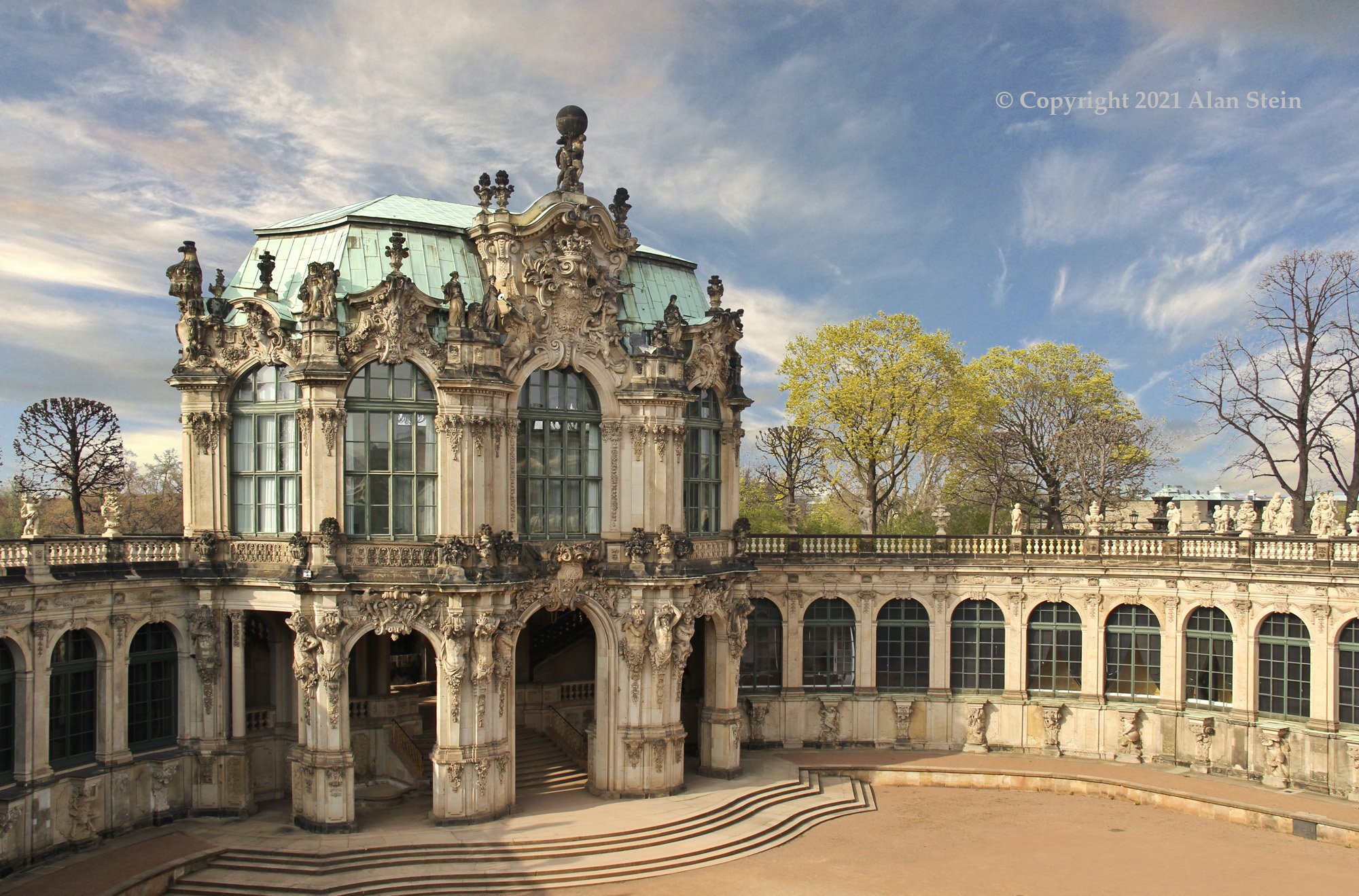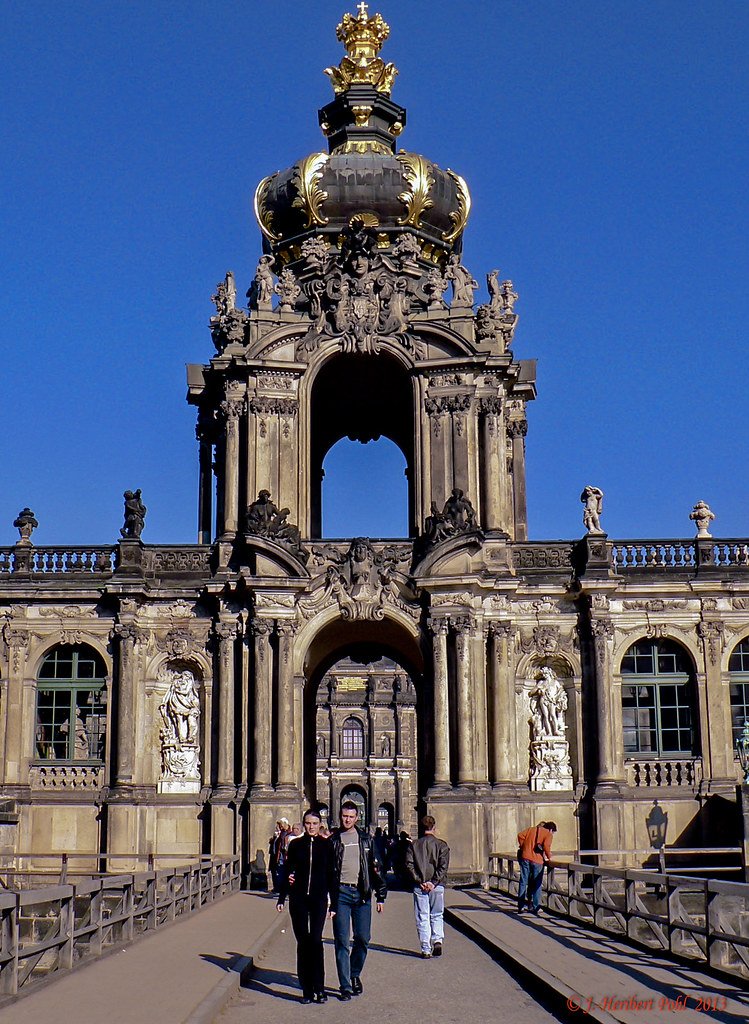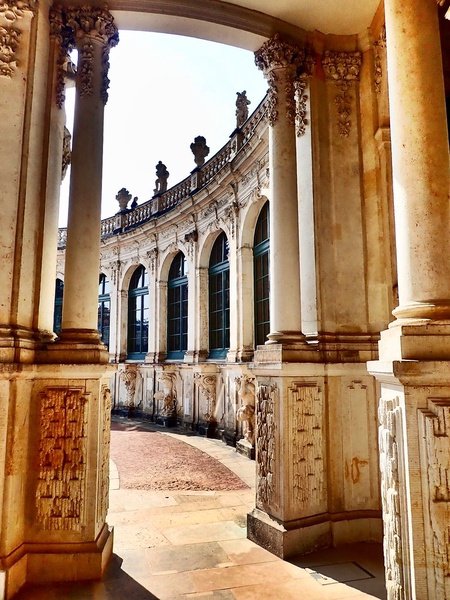
Zwinger Palace Orangery
Dresden, Germany, 1761
The orangery at the baroque Zwinger Palace in Dresden, Germany is Frederick-Augustus I’s grandest project. It was designed by architect Matthäus Daniel Pöppelmann in collaboration with sculptor Balthasar Permoser. Orangeries were an immense sign of wealth and luxury in the 18th century. Citrus was the most coveted of the fruit trees because of the numerous health benefits of vitamin C, hence the popularity of orangeries. What once started as an orangery to store exotic trees, eventually evolved to a well known and quite grand space for court activities.
In the beginning, the orangery was planned to be a modest garden consisting of U-shaped terraces with stairs at the pinnacle to join the levels displaying and housing Frederick-Augustus I’s coveted orange tree collection. Following 1711, terraces were built with arcaded galleries and the ground floor of the south pavilion was decorated to be a grotto. In the north pavilion, a nymphaeum, a Greco-Roman grotto dedicated to nymphs, was installed. Shelves on two sides of the uppermost level held life-size figures of nymphs created by Permoser.




Photo Credits: Alan Stein (Heading)
